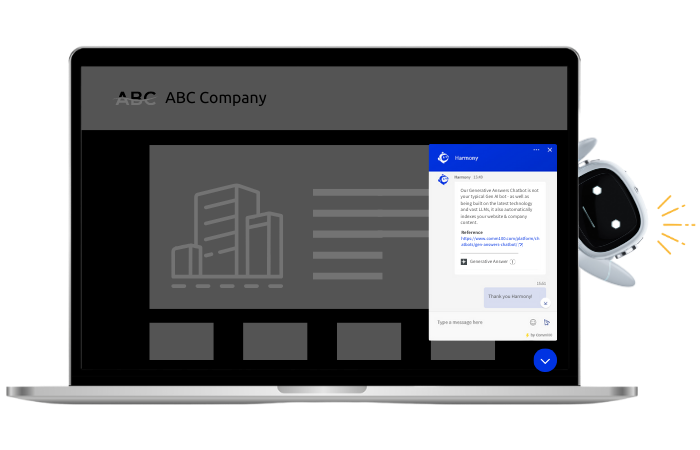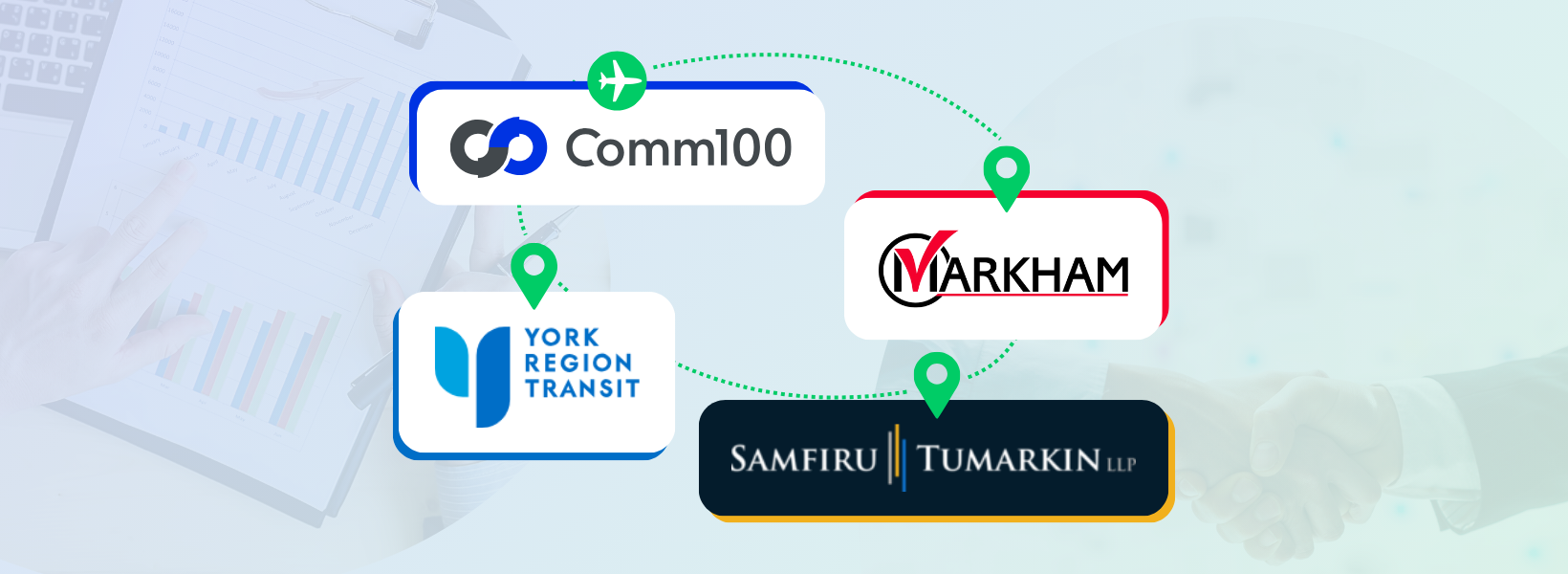Access to information is key to the success of any customer service team, whatever channel you use. But for this success to happen, this information can’t be siloed. For your company to thrive, your departments and the teams that comprise them must be on the same page at all times. For customer service, that means collecting, centralizing, and sorting important information into a well-crafted internal knowledge base.
An internal knowledge base is where customer support agents (and the entire staff) can access information about your company’s processes, products, and more. It is an agent-facing tool that helps team members quickly answer specific questions about how a product works, a return policy, ongoing promotion, or–on a more personal note– information about employee benefits like health care and PTO (paid time off).
Building an internal knowledge base is about giving your whole team, from the newest to the most senior members, access to information that helps them do their job better. It’s about making your customer support team’s job easier by giving them easy access to problem-solving information. This can seem like a huge task for a team that is just getting started on their own internal knowledge base (don’t worry–it’s easier than it seems!).
Use this blog post to learn how to create an internal knowledge base in just four easy steps.
- Choose your knowledge base type
- Gather your content
- Sort, format, and manage your content
- Choose an internal knowledge base software
Step 1: Choose your knowledge base type
There are two types of knowledge bases for customer support: internal and external. While the two have some overlap in form and functionality, it’s important to understand what each is used for before you build your internal knowledge base.
External knowledge bases are designed to help your customers find answers to questions about a service, product, or topic without having to go through an agent. Like digital libraries, external knowledge bases empower customers to take matters into their own hands by making popular topics easily searchable and consumable. External knowledge bases can be found on a customer-facing web page (such as an FAQ page), or on a customer service platform with an embedded search window (such as live chat). As a self-serve tool, external knowledge bases are available 24/7 and save companies valuable time and resources by reducing the amount of incoming chat requests, calls, and emails.
But what happens when a customer doesn’t want to search for the answer or cannot find it?
No matter how good your external knowledge base is, there will always be times when a customer would rather take their issue up directly with an agent. This is where an internal knowledge base comes into play.
The value of an internal knowledge base is elegantly simple: agents cannot possibly remember the answer to every question a customer may ask. To help them, and to make sure that answers are always accurate, agents can rely on an internal knowledge base to help them find the answer they’re looking for.
Internal knowledge bases work a lot like external knowledge bases. There is one major difference, however: internal knowledge bases are for the benefit of employees, and therefore are not visible to customers. They are used to smooth out and speed up backend operations by giving agents access to centralized information. Let’s take a look at the key benefits of an internal knowledge base.
The benefits of internal knowledge bases
Reduce callbacks and repeat contact – As well intentioned as they might be, sometimes agents slip up and give your customers the wrong answer to their query. An internal knowledge base can prevent agents from giving out misinformation by giving them quick and easy access to the most up-to-date and fully vetted responses.
Provide consistency – For your customers, being told two different things by two different agents is very frustrating. Successful internal knowledge bases give all agents access to the same data and response standards. With an internal knowledge base, companies can count on a consistent brand voice, accurate delivery, and responses that have been consistently formatted for different customer service platforms.
Reduce training time – With an internal knowledge base to aid them, your newest agents don’t have to know the answer to every query by heart before they get on the field–instead, they can learn how to solve common problems as they work. The same applies to all agents when you roll out a new product or service – your knowledge base won’t replace training, but it will help tremendously with knowledge retention.
Free up internal resources – When your agents don’t know the answer to a problem, they may turn to their colleagues or managers for help. Your customer service team leaders are one of your company’s most valuable internal resources. By giving agents easy access to scripted solutions, you will free up your most talented and seasoned customer service representatives to tackle more challenging and nuanced problems.
Help your team perform efficiently – Your internal knowledge base will increase agent efficiency through data centralization, but it shouldn’t stop there. The software you use to build and maintain your knowledge base should offer other benefits as well: for example, it should provide agents with keyboard shortcuts that help them quickly search for and pull up the answers to customer queries. Advanced internal knowledge base software eliminates wasted time by using AI to predict customer needs and provide agents with the appropriate responses right inside the live chat window.
Clarify internal protocols and policies – Internal knowledge bases are primarily built to empower agents to help customers. However, they can also be built to help agents find information for their own employment. For example, by building a separate knowledge base, agents can access HR info such as payroll, work schedules, company policies, relevant phone numbers and email addresses.
Scale with ease – As your team grows, so will your business’ wealth of information. By gathering important information in a centralized internal knowledge base, your team can collaborate, share, and add to the knowledge base with ease, enabling you to expand your team and operations smoothly.
There’s one more major benefit of internal knowledge bases that must be accounted for: having a successful agent knowledge base means improving your metrics across the board. Whether your company is building an internal knowledge base for the first time or simply updating an existing one, you can expect to increase your response rate, improve first time resolution, boost customer and agent satisfaction, reduce agent turnover, and more.
Still need convincing of the importance of a strong knowledge base? Read this guide on What Is a Knowledge Base and Why Is It Useful?
Step 2: Gather your content
The effectiveness of your internal knowledge base will largely depend on how successfully its content meets your customer service team’s needs.
To gather content quickly and successfully, start by taking stock of what information you already have. Here are some of the resources that you can refer to as you compile content for your internal knowledge base:
External knowledge base – While they serve different purposes, your external knowledge base is a great starting point for determining what information your customer service agents need at the ready on a day-to-day basis. With responses to FAQs internally accessible, agents can send customers informative articles in a matter of clicks, eliminating the need to search through the company website or explain processes from scratch.
Canned messages – Before you set up an internal knowledge base, canned messages often existed in silo as word documents on agent computers. Adding canned messages to your internal knowledge base gives agents easy access to up-to-date, on-brand content that they can quickly fire off in response to customer queries.
Live chat transcripts – An audit of your live chat transcripts will show you what questions your customers are asking, highlight internal inconsistencies, and help you determine which information needs to be updated or centralized.
Customer satisfaction surveys – Customer satisfaction surveys can be telling of both customer and agent pain points. What are your agents struggling to help your customers with?
Internal documents – Employees should be able to search for relevant information from internal documents such as HR handbooks and training manuals (such as information about metrics and performance) in their internal knowledge base. The same can be said of manuals, product guides and general FAQs.
Employee suggestions – Want to know what information to include in your agent knowledge base? Ask your team! No one knows what customers ask about better than your front-line customer service agents. By creating an avenue where agents and managers can directly suggest new material, you will be able to incorporate what is most directly beneficial to them.
Be mindful to select, create, and curate content that is directly useful to your agents so as not to clutter your internal knowledge base with obsolete material. A good search function or AI can also help keep your internal knowledge base useful without overwhelming users (more on this later).
If you already have an internal knowledge base and are upgrading it or moving it to a new system, take time to perform a content audit. You want to make sure that you only move information that is up to date, relevant, and accurate. You can also perform this audit on your external knowledge base using metrics such as total visits and time spent on page.
Remember that it takes time and effort to ensure usability. If you are starting from scratch, start small with your most pressing agent pain-points, and build from there.
Step 3: Sort, format, and manage your content
Once you have gathered your content, take the time to organize it into manageable sections. Just as you would want information to be easily findable for customers, it should also be for your agents. Use key words and tags that your agents can use to pull content up quickly. Make sure that article titles are accurate, coherent, and descriptive.
To ensure that your content is both useful and well-managed, you’ll want to divide ownership of content amongst trusted team leaders. For example, you might give one or more customer service managers ownership of a certain topic, so that they may edit, add, and delete canned responses according to the department’s needs. By dividing up responsibility of different internal knowledge base sections, you can guarantee that the resource will be maintained and updated by the most appropriate experts.
While building an internal knowledge base, you may also decide who has permission to view different topics and articles. If you want a specific internal resource to be available only to customer service managers and supervisors, you can alter the permissions accordingly so that each employee has a suitable agent knowledge base experience.
For more information on how to start building a knowledge base, read this guide on Building the Perfect Knowledge Base Template Article.
Step 4: Choose an Internal Knowledge Base Software
Once you know what you want from your agent knowledge base, the content you are going to include, and the internal structure for creating and maintaining that content, it is time to choose your internal knowledge base software.
Internal knowledge base software is varied and boasts different features and levels of search-engine power and automation. Keep in mind that while we have covered what benefits you can expect from internal knowledge bases in general, how much your metrics will improve depends to some extent on the ability of the software you choose. Likewise, your ability to manage and maintain your agent knowledge base articles will also vary according to your software’s functionality.
When choosing an internal knowledge base software, ask yourself:
- Does it meet my team’s efficiency needs?
- Does it fulfill my team’s content management and other functionality needs?
- Does it integrate and communicate with my company’s existing customer service software?
- Is it user friendly for building and maintaining content?
- Does it integrate with my company’s existing platforms?
- Does it support rich data formats like video and images?
- How and where is it accessible?
- Can my agents access it in-platform?
Comm100’s internal knowledge base is part of our omnichannel platform, meaning it is fully accessible in the agent console. Whether agents are responding to a live chat request, a social media message, an email or a text message, they’ll have full access to the knowledge base to help them deliver a smooth and frictionless customer experience.
Even in the agent console, customer service reps don’t have to search the internal knowledge base alone. While some internal knowledge base software requires agents to search through pages of knowledge base articles, Comm100’s Agent Assist automatically helps agents with this process.
Agent Assist uses AI technology to understand what a customer is asking in a chat and suggests a response in real-time to the agent, speeding up response rates and chat concurrency while making agents’ lives easier. What’s more, Agent Assist gets smarter on its own by observing your agents’ chat behavior — whenever an agent uses a suggestion in response to a visitor question, Agent Assist notices and improves its suggestion confidence.
You can find out how much money you’d save by simply implementing Agent Assist into your live chat software in this Agent Assist ROI Calculator.
Conclusion
Customer service agents spend too much time looking for information— it’s a well-known pain point that centralized information systems were designed to eliminate. By building an internal knowledge base, you can not only increase agent productivity and confidence, but improve the overall agent experience.
Internal knowledge bases can ensure consistency of information whether your agents work from home, at a local office, or overseas. While building an internal knowledge base is worthwhile for improving your customer service operations, remember that it is an ongoing project that will get smarter with time. Once you have published your internal knowledge base, keep listening to agent feedback, communicating with your employees, listening to customer feedback, and conducting audits to keep your content in tip-top shape.
For more information on how omnichannel solutions can improve your customer experience, check out the report below:






